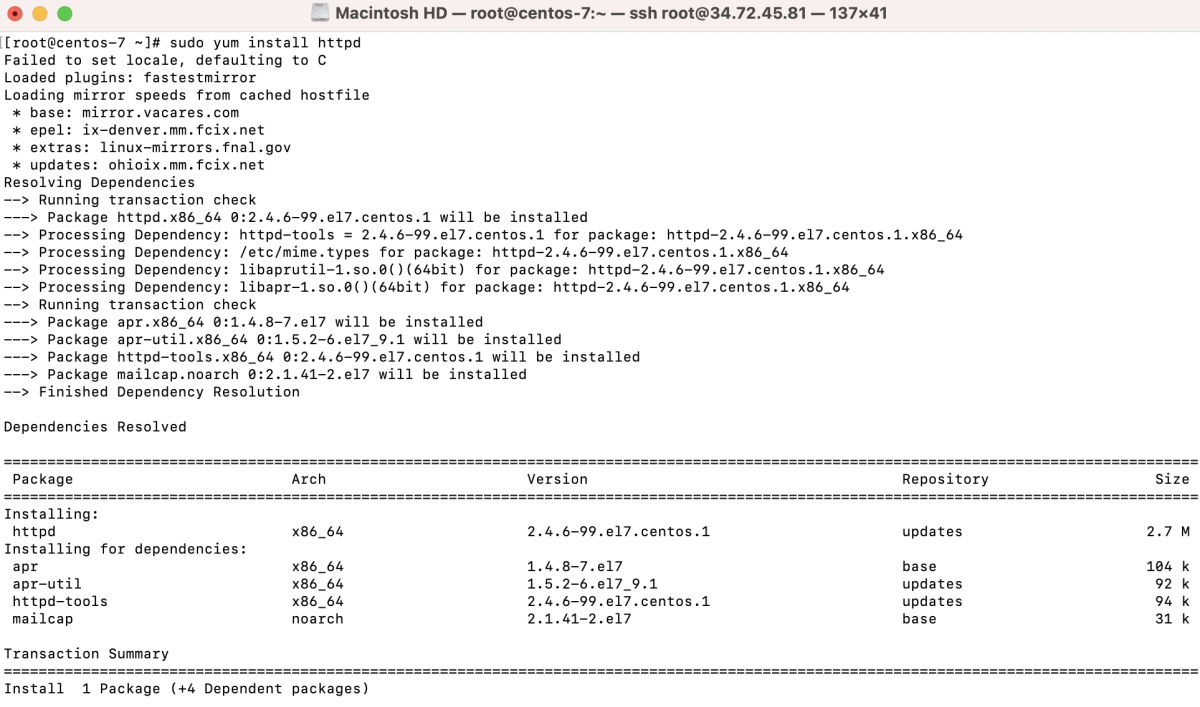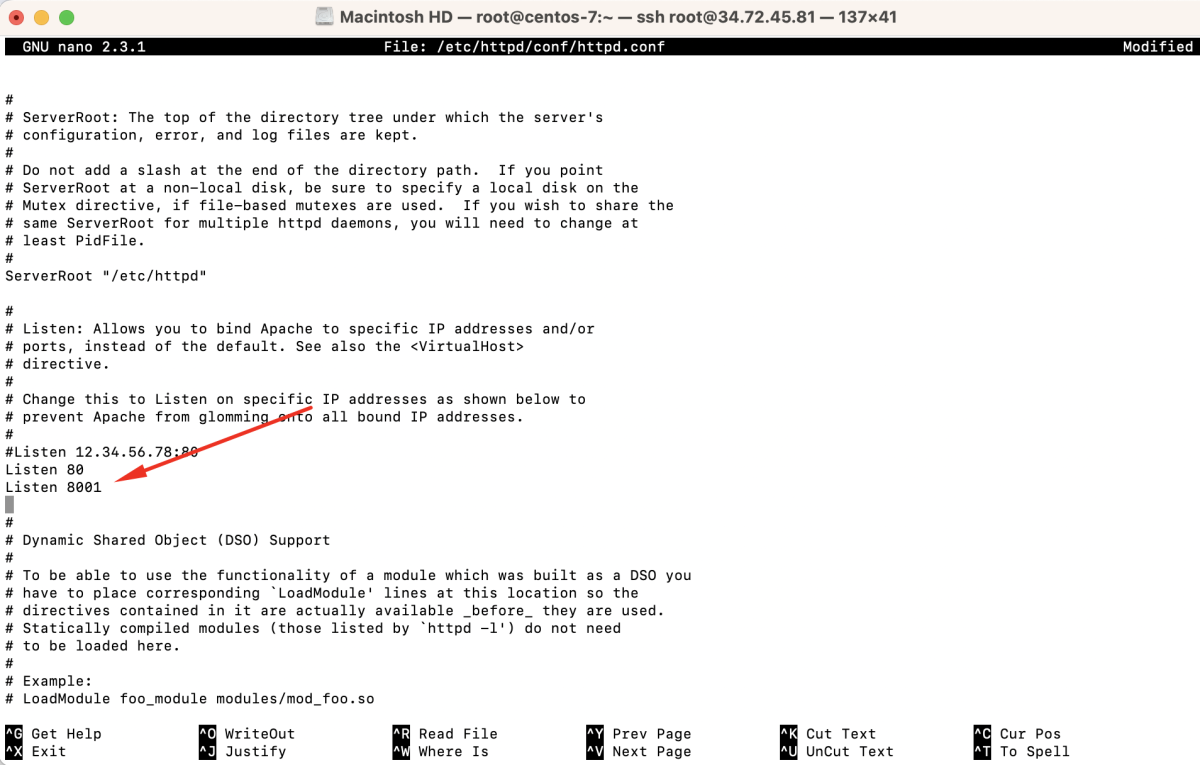To configure SELinux on CentOS 7, follow the steps below:
Step 1 : By default, SELinux is enabled. You can check its status using the following command:

Step 2 : You can also check the SELinux configuration using:

Step 3 : SELinux has three modes: Enforcing, Permissive, and Disabled.
- Enforcing: SELinux security policy is enforced.
- Permissive: SELinux does not enforce security policy but logs actions that would be denied in enforcing mode.
- Disabled: SELinux is completely disabled.
Step 4 : Disable SELinux.
If you don't need SELinux for any reason, you can disable it temporarily or permanently:
- Temporarily disable SELinux:

- Permanently disable SELinux: Edit the SELINUX line in /etc/selinux/config file to:


- Reboot the system if SELinux is disabled permanently.
Step 5 : Check the SELinux status again to ensure it's disabled if that was your intention.

Step 6 : Basic SELinux Configuration
- For a basic example, let's install Apache:

Step 7 : Edit the Apache configuration file:
Add the line Listen 8001 to change the default port.

Step 8 : Create a configuration file:
Add configuration to change port and root folder.

Step 9 : Create a folder and index file:

Step 10 : Set appropriate permissions

Step 11 : Open firewall port if necessary:

Step 11 : Install policycoreutils-python:

Step 12 : List SELinux port contexts:

Step 13 : Add a new port for Apache:

Step 14 : Verify the port addition:

Step 15 : Use matchpathcon to compare new directory with default Apache directory:

Step 16 :Match SELinux contexts for the new directory:

Step 17 : Apply the label changes:

Step 18 : Test the Apache configuration:

Step 19 : Restart Apache:

Step 20 : Test the configuration by accessing domain:port.

Congratulations! Your SELinux configuration on CentOS 7 is complete.